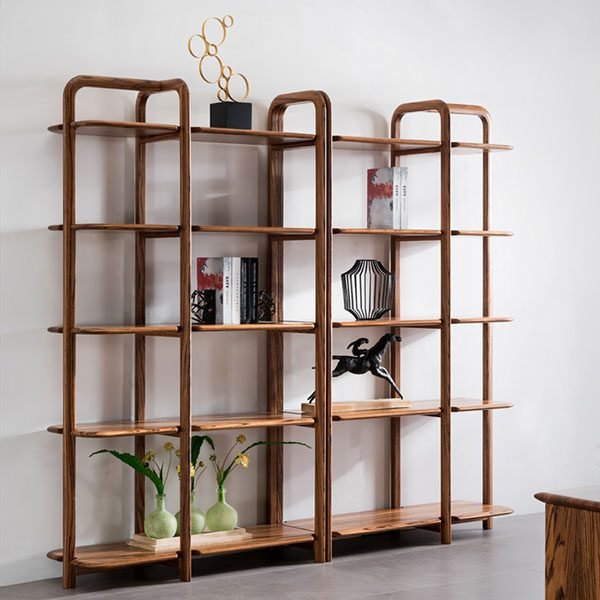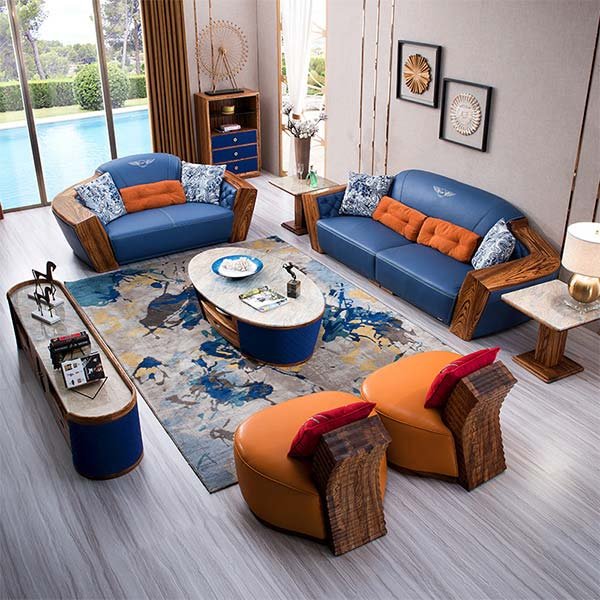“Creating comfort and style, furniture brings life to your space.”
The Evolution of Furniture: From Ancient Times to Modern Designs
The Evolution of Furniture: From Ancient Times to Modern Designs
Furniture has always played a significant role in human history. From the earliest civilizations to the modern era, furniture has evolved and adapted to meet the changing needs and tastes of society. In this article, we will explore the fascinating journey of furniture, from its humble beginnings to the innovative designs of today.
Ancient civilizations, such as the Egyptians and Mesopotamians, were among the first to create furniture. These early pieces were simple and functional, primarily made from wood and stone. Chairs, tables, and beds were essential for daily life, and their designs reflected the cultural and social values of the time.
As civilizations advanced, so did furniture. The Greeks and Romans introduced more intricate designs, incorporating elements of art and craftsmanship. Furniture became a symbol of wealth and status, with ornate carvings and luxurious materials like gold and ivory. The concept of comfort also emerged, with the invention of cushions and upholstery.
The Middle Ages saw a shift in furniture design, influenced by the rise of feudalism and the dominance of the church. Furniture became more utilitarian, with a focus on practicality rather than aesthetics. Heavy wooden pieces, such as chests and benches, were common in households, while ornate furniture was reserved for the nobility and clergy.
The Renaissance period marked a significant turning point in furniture design. Inspired by the revival of classical art and culture, furniture became more refined and elegant. The use of new materials, such as walnut and oak, allowed for intricate carvings and detailed craftsmanship. Chairs and tables became more comfortable, with the addition of cushions and upholstery.
The Industrial Revolution in the 18th and 19th centuries brought about a revolution in furniture production. Mass production techniques and the use of new materials, such as iron and steel, made furniture more affordable and accessible to the middle class. The Victorian era saw a resurgence of ornate designs, with furniture becoming a status symbol once again.
In the 20th century, furniture design underwent radical changes. The Art Nouveau movement embraced organic forms and natural materials, while the Bauhaus movement focused on functionality and simplicity. The mid-century modern style, popularized in the post-war era, emphasized clean lines and minimalism. Furniture became a reflection of the changing lifestyles and values of society.
Today, furniture design continues to evolve, with a focus on sustainability and innovation. Designers are experimenting with new materials, such as recycled plastics and reclaimed wood, to create eco-friendly pieces. Technology is also playing a significant role, with the integration of smart features and modular designs.
In conclusion, the evolution of furniture is a testament to human creativity and ingenuity. From the simple and functional pieces of ancient civilizations to the innovative designs of today, furniture has adapted to meet the changing needs and tastes of society. Whether it is a classic antique or a modern masterpiece, furniture continues to play a vital role in our lives, providing comfort, functionality, and aesthetic pleasure.
Exploring the Cultural Significance of Furniture in Different Societies
Furniture has always played a significant role in societies around the world. It is not just a functional item but also carries cultural and historical significance. Exploring the cultural significance of furniture in different societies allows us to understand the values, traditions, and lifestyles of various communities.
In ancient Egypt, furniture was considered a symbol of wealth and social status. The pharaohs and nobles adorned their homes with luxurious and intricately designed furniture. These pieces were often made from precious materials such as gold, silver, and ivory. The furniture reflected the opulence and power of the ruling class, while also serving practical purposes.
Moving on to ancient China, furniture was seen as a reflection of harmony and balance. The Chinese believed in the concept of Feng Shui, which emphasized the arrangement of furniture to create a harmonious living space. Furniture was designed to promote positive energy flow and enhance the well-being of the occupants. The use of natural materials like wood and bamboo was common, as they were believed to bring good luck and prosperity.
In contrast, the nomadic tribes of Mongolia had a different approach to furniture. Their lifestyle required furniture that was portable and easy to assemble and disassemble. The Mongolian yurt, or ger, was a traditional dwelling made of felt and supported by a collapsible wooden frame. The furniture inside the yurt was minimalistic, consisting of low stools and beds that could be easily transported when the tribe moved to a new location.
In Europe during the Middle Ages, furniture was primarily functional and practical. The majority of the population lived in small, cramped spaces, so furniture had to be compact and multi-purpose. Beds were often used as seating during the day, and tables were collapsible to save space. The design and craftsmanship of furniture during this period were simple and utilitarian, reflecting the harsh living conditions of the time.
As societies evolved, so did the meaning and significance of furniture. In the modern era, furniture has become a form of self-expression and personal style. People choose furniture that reflects their individual tastes and preferences. It is not just about functionality but also about creating a comfortable and aesthetically pleasing living space.
Furthermore, furniture has also become a means of preserving cultural heritage. Traditional furniture designs and techniques are passed down through generations, keeping alive the craftsmanship and skills of the past. In many societies, furniture-making is considered an art form, with artisans creating unique and intricate pieces that showcase their cultural heritage.
In conclusion, furniture holds great cultural significance in different societies. From symbolizing wealth and social status to promoting harmony and balance, furniture reflects the values and traditions of a community. It has evolved from being purely functional to becoming a form of self-expression and a means of preserving cultural heritage. Understanding the cultural significance of furniture allows us to appreciate the diversity and richness of different societies around the world.
The Psychology of Furniture: How Our Surroundings Impact Our Well-being
The Psychology of Furniture: How Our Surroundings Impact Our Well-being
Furniture plays a significant role in our lives, beyond its functional purpose. It has the power to influence our mood, emotions, and overall well-being. The psychology of furniture explores the connection between our surroundings and our mental state. Understanding this relationship can help us create spaces that promote positivity and enhance our quality of life.
One of the key aspects of furniture psychology is the concept of comfort. Comfortable furniture not only provides physical relaxation but also contributes to our mental well-being. When we sit on a cozy chair or lie down on a comfortable bed, our bodies release endorphins, which are natural mood boosters. This feeling of comfort can alleviate stress and anxiety, allowing us to unwind and recharge.
Another important factor to consider is the aesthetics of furniture. The visual appeal of our surroundings has a profound impact on our emotions. Beautifully designed furniture can evoke feelings of joy, inspiration, and tranquility. On the other hand, cluttered or unattractive furniture can create a sense of unease and restlessness. By choosing furniture that aligns with our personal taste and style, we can create a space that reflects our identity and promotes a positive mindset.
The arrangement of furniture also plays a crucial role in our well-being. The layout of a room can affect our mood and behavior. For example, an open and spacious arrangement can create a sense of freedom and relaxation, while a cluttered and cramped space can induce feelings of stress and discomfort. By arranging furniture in a way that maximizes flow and functionality, we can create a harmonious environment that supports our mental well-being.
Color psychology is another aspect of furniture psychology that should not be overlooked. Different colors have the power to evoke specific emotions and moods. For instance, warm colors like red and orange can stimulate energy and passion, while cool colors like blue and green can promote calmness and tranquility. By incorporating colors that align with our desired emotional state, we can create a space that enhances our overall well-being.
Furthermore, the materials used in furniture can also impact our mental state. Natural materials like wood and leather can create a sense of warmth and connection to nature, which can have a calming effect on our minds. On the other hand, synthetic materials like plastic and metal can create a more sterile and impersonal atmosphere. By choosing furniture made from materials that resonate with us, we can create a space that promotes a sense of comfort and well-being.
In conclusion, the psychology of furniture highlights the profound impact our surroundings have on our mental state. Comfort, aesthetics, arrangement, color, and materials all play a role in shaping our well-being. By understanding this connection, we can make conscious choices when selecting and arranging furniture to create spaces that promote positivity, relaxation, and overall mental well-being. So, the next time you are furnishing your home or office, remember to consider the psychology behind it and create a space that supports your emotional and mental needs.
Заключение
Заключение: Мебель – это предметы, созданные для использования в интерьере, предназначенные для обеспечения комфорта, удобства и функциональности в жилых и рабочих пространствах. Она включает в себя различные предметы, такие как стулья, столы, шкафы, кровати и диваны, которые служат для сидения, хранения вещей и поддержки других предметов. Мебель также может быть использована для создания определенного стиля или дизайна в помещении.



